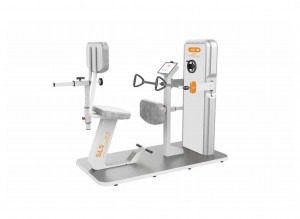What are the consequences of poor sitting posture? How to correct sitting posture, what should be paid attention to in daily life?let’s read it together.
Poor sitting posture can lead to a variety of health issues, including:
- Musculoskeletal pain: Poor posture can cause muscle imbalances, strains, and tension, leading to pain in the neck, shoulders, back, and even the hips and legs.
- Spine misalignment: Slouching or hunching while sitting can cause the natural curves of the spine to become misaligned, leading to pain and potential long-term issues.
- Decreased circulation: Sitting with poor posture can restrict blood flow, causing numbness or tingling in the extremities and potentially contributing to the development of blood clots or varicose veins.
- Fatigue: Poor posture puts stress on the muscles and joints, requiring more energy to maintain and leading to fatigue.
- Headaches: Tension in the neck and shoulders due to poor posture can lead to tension headaches or migraines.

To correct poor sitting posture and prevent these issues, should follow these tips:
- Adjust your chair: Choose a chair with proper lumbar support and adjust the height so your feet are flat on the floor with your knees bent at a 90-degree angle. Your hips should be slightly higher than your knees.
- Sit back in the chair: Make sure your back is fully supported by the chair’s backrest, allowing for the natural curve of your lower back.
- Keep your feet flat: Place your feet flat on the floor or use a footrest if needed. Avoid crossing your legs or ankles.
- Position your screen: Place your computer screen at eye level and about an arm’s length away to avoid straining your neck.
- Relax your shoulders: Keep your shoulders relaxed and avoid hunching or rounding them forward.
- Take breaks: Stand up and stretch every 30 minutes to an hour to help maintain good posture and prevent muscle fatigue.

In daily life, we should pay attention to:
- Strengthening exercises: Perform exercises to strengthen the muscles that support good posture, including the core, upper back, and shoulders.
- Stretching: Regularly stretch tight muscles, especially those in the chest, neck, and shoulders, to improve flexibility and prevent muscle imbalances.
- Mindfulness: Be aware of your posture throughout the day and make adjustments as needed.
- Ergonomic environment: Ensure your workspace is set up ergonomically to support good posture and reduce strain on your body.
If spinal degenerative changes, abnormal back function, cervical spondylosis or lumbar spondylosis have occurred,
The Sitting Spine Stability Assessment Training Instrument can be used to assist in rehabilitation.
 more details: https://www.yikangmedical.com/spine-stability-assessment.html
more details: https://www.yikangmedical.com/spine-stability-assessment.html
Post time: May-24-2023






